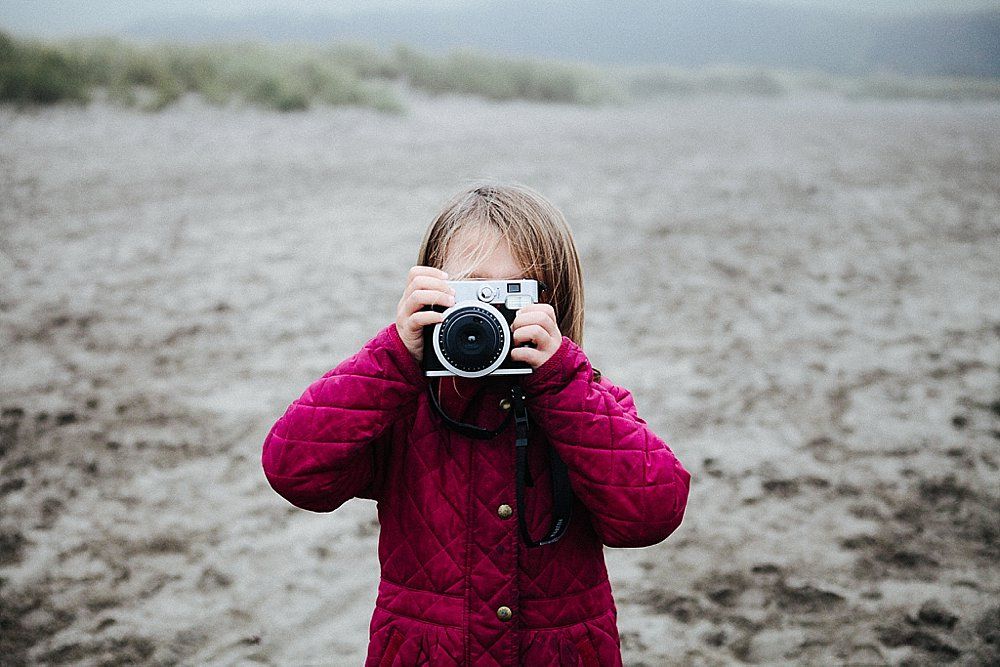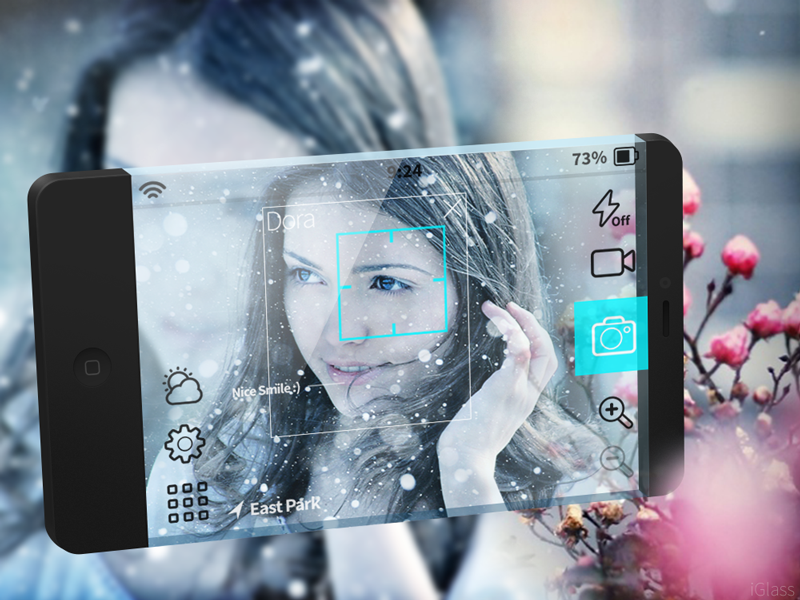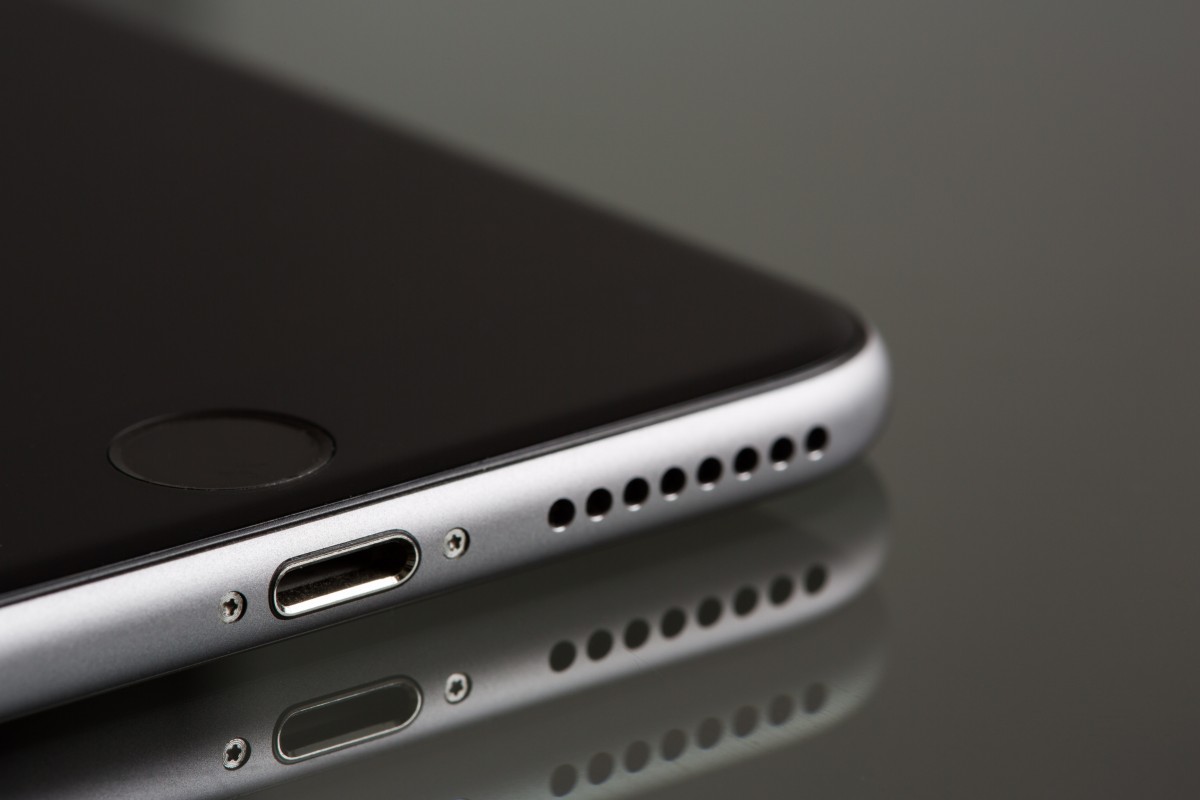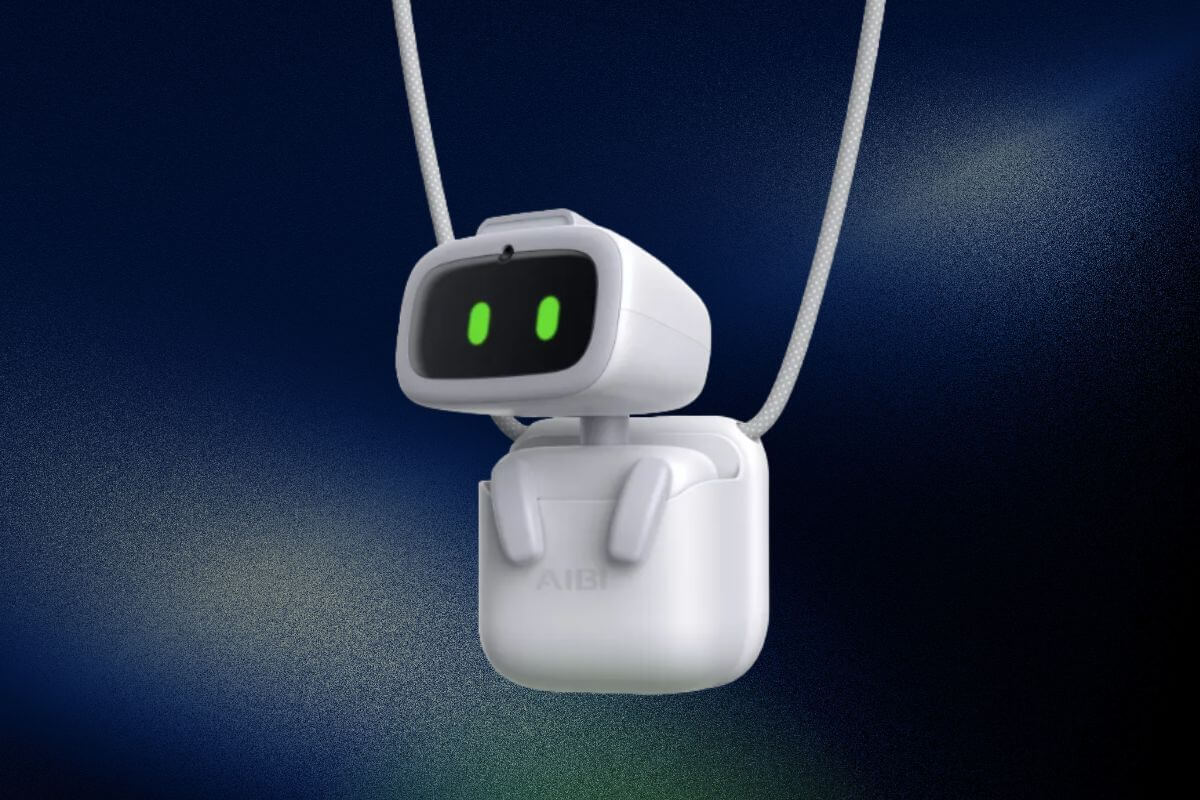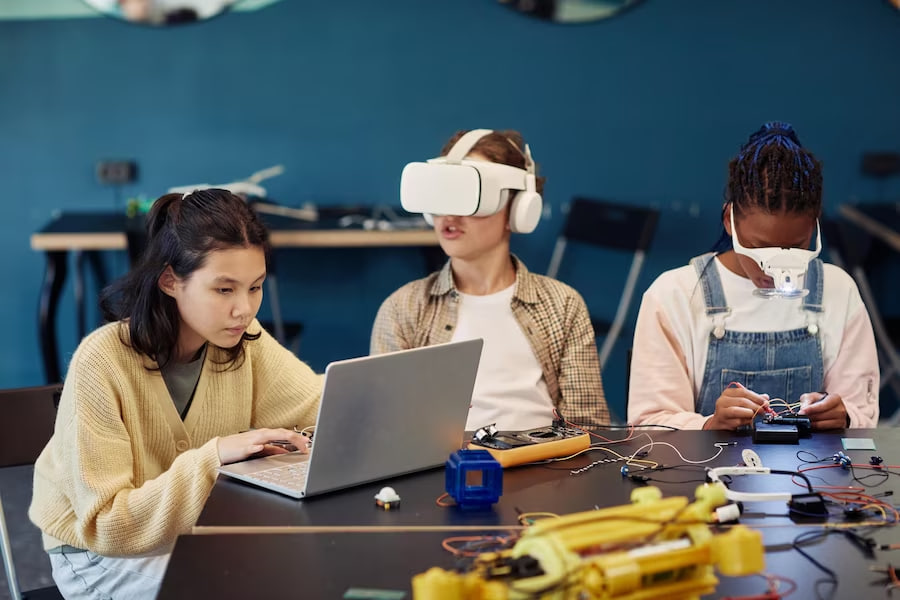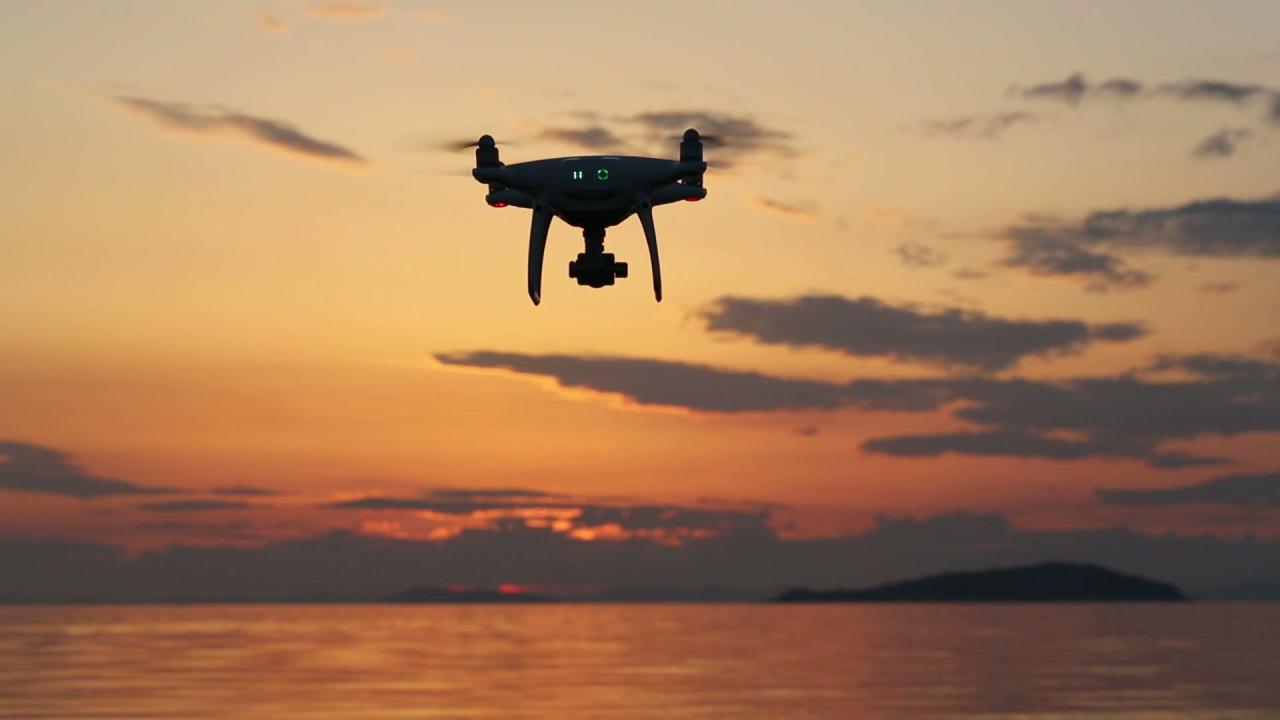The Art and Science of Capturing Moments
Photography, at its heart, is about capturing moments—freezing fleeting instances in time, preserving emotions, and telling stories without words. The evolution of camera technology has been a relentless journey, transforming from bulky, complex machines to sophisticated, intuitive devices that fit into our pockets. What once required specialized knowledge and darkroom expertise is now accessible to billions, thanks to continuous innovation in sensors, lenses, processing power, and software. This comprehensive article delves into the intricate world of modern camera technology, exploring the fundamental principles that govern image capture, the cutting-edge advancements driving current trends, their diverse applications across various fields, and the profound impact they have had on human communication and creativity. We’ll also peer into the future, anticipating the next wave of innovations that promise to redefine our visual experiences.
The Foundation: How Cameras Capture Light
At its core, every camera, whether a vintage film camera or a state-of-the-art digital mirrorless, operates on a similar principle: capturing light and converting it into an image. Understanding these fundamental components is key to appreciating the technological leaps we’ve witnessed.
A. The Lens: Gathering and Focusing Light
The lens is the eye of the camera, responsible for gathering light from a scene and focusing it onto the image sensor or film. Its quality and characteristics significantly impact the final image.
- Focal Length: This determines the field of view and magnification.
- Wide-angle lenses (short focal length) capture a broad scene, ideal for landscapes or interiors.
- Telephoto lenses (long focal length) narrow the field of view, magnifying distant subjects, perfect for wildlife or sports.
- Standard lenses (around 50mm on full-frame) offer a perspective similar to human vision.
- Aperture: Represented by an f-number (e.g., f/1.8, f/8), the aperture is the opening within the lens that controls the amount of light entering the camera.
- Larger apertures (smaller f-numbers) let in more light, allowing for faster shutter speeds in low light and creating a shallower depth of field (more background blur, known as “bokeh”).
- Smaller apertures (larger f-numbers) let in less light, requiring slower shutter speeds but producing greater depth of field (more of the scene in focus).
- Lens Elements and Coatings: Modern lenses comprise multiple glass elements to correct optical aberrations (distortions or color fringing). Specialized coatings are applied to reduce flare and ghosting, ensuring clearer, higher-contrast images. The precise grinding and alignment of these elements are crucial for sharpness.
- Zoom vs. Prime Lenses:
- Zoom lenses offer variable focal lengths (e.g., 24-70mm), providing versatility.
- Prime lenses have a fixed focal length, often boasting wider maximum apertures and superior optical quality due to simpler designs and fewer moving parts.
B. The Sensor: Converting Light into Digital Information
In digital cameras, the image sensor is the crucial component that converts light into an electrical signal, which is then processed into a digital image. This is where the magic of “pixels” happens.
- Sensor Size: This is arguably the most critical factor for image quality in digital cameras.
- Full-frame sensors (roughly the size of 35mm film) offer excellent low-light performance, wider dynamic range, and shallower depth of field.
- APS-C sensors are smaller but still provide good image quality, found in many DSLRs and mirrorless cameras.
- Micro Four Thirds (M4/3) sensors are even smaller, allowing for more compact cameras and lenses.
- Smartphone sensors are significantly smaller than dedicated camera sensors, which presents unique challenges addressed by computational photography.
- Generally, a larger sensor can gather more light, resulting in less noise (grain) in low-light conditions and better overall image fidelity.
- Megapixels (Resolution): This refers to the number of individual photosites (pixels) on the sensor. More megapixels generally mean larger image files and the ability to crop more aggressively or print larger without losing detail. However, it’s a common misconception that more megapixels automatically equate to better image quality; sensor size and pixel quality are often more important.
- CMOS vs. CCD: While CCD sensors were once dominant, CMOS (Complementary Metal-Oxide-Semiconductor) sensors are now prevalent due to their lower power consumption, faster readout speeds, and ability to integrate more features directly onto the chip, making them ideal for video and live view.
- Back-Side Illuminated (BSI) Sensors: BSI sensors reposition the wiring behind the photosensitive area, allowing more light to reach the pixels, significantly improving low-light performance, particularly crucial for smaller smartphone sensors.
- Stacked Sensors: This advanced design integrates memory directly onto the sensor, enabling incredibly fast readout speeds, burst shooting, and slow-motion video capture.
C. The Shutter: Controlling Exposure Time
The shutter controls the duration for which the image sensor is exposed to light.
- Shutter Speed: This is the length of time the shutter remains open.
- Fast shutter speeds (e.g., 1/1000s) freeze motion, ideal for sports or action.
- Slow shutter speeds (e.g., 1/30s or longer) create motion blur, often used for artistic effects or to capture light trails.
- Mechanical vs. Electronic Shutter:
- Mechanical shutters are physical curtains that open and close in front of the sensor. They are robust but have limitations in terms of speed and can cause vibration.
- Electronic shutters (or rolling shutters) read out the sensor line by line. They allow for extremely fast shutter speeds, silent operation, and high-speed burst shooting. However, rolling shutters can introduce distortion (“jello effect”) when photographing fast-moving subjects. Advanced sensors with global shutters, which read all pixels simultaneously, eliminate this distortion but are currently expensive.
D. The Image Processor: The Brain of the Camera
The image processor is the camera’s central processing unit, responsible for taking the raw data from the sensor and converting it into a usable image file (JPEG, HEIC, or RAW).
- Noise Reduction: The processor applies algorithms to reduce digital noise, especially in low-light, high-ISO images.
- Color Science: It interprets the color information from the sensor and applies a specific color profile, contributing to the camera’s unique “look.”
- Autofocus and Metering: The processor runs the complex algorithms that enable rapid and accurate autofocus and exposure metering.
- Computational Photography: In modern cameras, particularly smartphones, the image processor is the engine behind advanced computational photography features, stitching multiple images together, applying AI enhancements, and much more.
E. ISO: Amplifying the Signal
ISO represents the sensor’s sensitivity to light.
- Low ISO (e.g., 100, 200): Less sensitive, produces cleaner images with less noise, ideal in bright conditions.
- High ISO (e.g., 1600, 6400+): More sensitive, allows for shooting in low light without flash but introduces more digital noise.
- Modern camera sensors and processors are increasingly capable of producing usable images at very high ISO settings, pushing the boundaries of low-light photography.
Cutting-Edge Camera Technologies: Beyond the Basics
The past decade has seen an explosion of innovation, moving beyond traditional camera designs and leveraging advanced computing power.
A. Computational Photography: Software is the New Sensor
This is perhaps the most transformative trend, especially in smartphones, where software algorithms manipulate and combine multiple images to create a final result that far exceeds the capabilities of the small sensor alone.
- HDR (High Dynamic Range): Combines multiple exposures (under, normal, over) into one image to capture a wider range of tones, from deep shadows to bright highlights.
- Night Mode/Low Light Photography: Captures numerous frames over several seconds, aligning them, removing handshake blur, and using AI to enhance detail and reduce noise, creating surprisingly bright and clear low-light images.
- Portrait Mode/Background Blur (Bokeh): Uses depth mapping (from multiple lenses or LiDAR) and AI segmentation to separate the subject from the background, artificially blurring the background for a professional “bokeh” effect.
- ProRes/RAW Video Capture: High-end smartphones now offer professional-grade video codecs and RAW image capture, providing greater flexibility for post-production editing.
- Deep Fusion/Smart HDR: Apple’s “Deep Fusion” or Google’s “HDR+” are examples of highly sophisticated computational techniques that analyze multiple frames pixel-by-pixel, optimizing textures, noise, and dynamic range for an incredibly detailed and natural look.
- Semantic Segmentation: AI identifies different elements in a scene (sky, skin, trees) and applies targeted adjustments for optimal processing.
B. Mirrorless Cameras: The Future of Dedicated Photography
Mirrorless Interchangeable Lens Cameras (MILCs) have largely overtaken traditional DSLRs as the preferred choice for serious photographers due to their compact size, advanced features, and evolving lens ecosystems.
- Electronic Viewfinders (EVFs): Instead of an optical prism, mirrorless cameras use high-resolution electronic screens to show a real-time preview, including exposure and white balance adjustments, offering a “what you see is what you get” experience.
- In-Body Image Stabilization (IBIS): Many mirrorless cameras feature IBIS, where the sensor itself moves to counteract camera shake, allowing for sharper images and smoother video, even with non-stabilized lenses.
- Advanced Autofocus Systems: Mirrorless cameras often employ sophisticated Phase-Detection Autofocus (PDAF) points directly on the sensor, combined with contrast detection and AI-powered subject tracking (e.g., eye AF, animal AF), leading to incredibly fast and accurate focusing.
- High-Speed Shooting: Without a flapping mirror, mirrorless cameras can achieve much higher burst shooting rates (frames per second) than DSLRs.
- Compact Size: The absence of a mirror box allows for smaller and lighter camera bodies and sometimes more compact lenses.
C. Advanced Video Capabilities: Beyond Stills
Modern cameras, both dedicated and mobile, are increasingly powerful video tools, pushing the boundaries of what can be captured.
- 4K, 6K, 8K Video Recording: Higher resolutions provide incredible detail and flexibility for cropping in post-production.
- High Frame Rate (HFR) Slow Motion: Cameras can record at 120fps, 240fps, or even higher, allowing for ultra-smooth slow-motion playback.
- Log/RAW Video Profiles: These specialized video formats capture a wider dynamic range, preserving more detail in highlights and shadows, providing more flexibility for color grading in post-production, essential for professional workflows.
- Improved Autofocus for Video: Continuous autofocus during video recording has become highly reliable, with subject tracking capabilities.
- Internal ND Filters: Some cinema cameras and high-end mirrorless cameras incorporate built-in Neutral Density (ND) filters, allowing for wider apertures or slower shutter speeds in bright conditions without overexposure, crucial for video.
D. Artificial Intelligence (AI) and Machine Learning (ML) in Cameras
AI is not just for computational photography; it’s becoming deeply integrated into various camera functions.
- Intelligent Autofocus: AI recognizes and tracks subjects (humans, animals, vehicles) with uncanny accuracy, even predicting their movement.
- Scene Recognition: AI analyzes the scene to automatically apply optimal camera settings (exposure, white balance, color profile).
- Smart Composition Tools: Some cameras offer AI-driven cropping or composition guides to help users create more aesthetically pleasing images.
- Noise Reduction and Upscaling: AI algorithms are highly effective at reducing noise in high-ISO images and even upscaling lower-resolution images with impressive detail.
E. Connectivity and Workflow Integration
Seamless connectivity is crucial for modern photographic workflows, allowing for rapid sharing and remote control.
- Wi-Fi and Bluetooth: Essential for wirelessly transferring images to smartphones or computers, controlling the camera remotely, and geotagging photos.
- Cloud Integration: Some cameras offer direct upload to cloud services, streamlining backup and sharing.
- Faster USB Standards: USB-C ports with high data transfer speeds allow for rapid offloading of large image and video files.
Diverse Applications: Cameras Beyond Personal Photos
While personal photography remains dominant, camera technology has permeated countless industries and aspects of our lives, driving innovation and efficiency.
A. Professional Photography and Cinematography
From fashion shoots to blockbuster films, cutting-edge camera tech is the backbone of visual storytelling at the highest level.
- High-Resolution Sensor: Necessary for large prints and cinematic visual effects.
- Extensive Lens Ecosystems: Professional systems offer a vast array of specialized lenses for every conceivable scenario.
- Robust Build Quality and Weather Sealing: Essential for demanding environments.
- Advanced Workflow Integration: Compatibility with professional lighting, sound, and editing equipment.
B. Security and Surveillance
AI-powered cameras are revolutionizing security, offering capabilities far beyond traditional CCTV.
- Facial Recognition: Identifying individuals for access control or law enforcement.
- Anomaly Detection: AI analyzes video feeds to detect unusual behavior, abandoned packages, or intrusions, automatically alerting security personnel.
- Thermal Imaging: Cameras capable of detecting heat signatures are crucial for night vision, firefighting, and industrial inspections.
- License Plate Recognition: Automated systems for traffic monitoring and enforcement.
C. Healthcare and Medical Imaging
Cameras play a vital role in diagnosis, surgery, and research.
- Endoscopy and Laparoscopy: Miniature cameras allow doctors to visualize internal organs during minimally invasive procedures.
- Microscopy: High-resolution cameras attached to microscopes capture detailed images for research and pathology.
- Dermatology: Specialized cameras capture detailed skin images for detecting and monitoring skin conditions.
- Dental Imaging: Intraoral cameras provide detailed views of teeth and gums.
D. Automotive and Autonomous Driving
Cameras are the primary “eyes” of self-driving cars, enabling them to perceive their surroundings.
- Perception Systems: Multiple cameras provide 360-degree views, detecting other vehicles, pedestrians, lane markings, and traffic signs.
- Lidar and Radar Integration: While cameras are crucial, they are often combined with LiDAR (Light Detection and Ranging) and radar for more robust 3D mapping and object detection in adverse weather conditions.
- Driver Monitoring Systems: In-cabin cameras monitor driver attention and fatigue.
E. Industrial Inspection and Quality Control
Cameras are used to automate inspection processes, ensuring product quality and detecting defects.
- Machine Vision: High-speed cameras with specialized lighting analyze products on assembly lines, identifying flaws with precision.
- Robotics: Cameras guide robots for picking, placing, and assembly tasks.
- Agriculture: Drones with multispectral cameras monitor crop health, detect diseases, and optimize irrigation.
F. Space Exploration and Astronomy
Cameras are fundamental to our understanding of the universe.
- Telescopes: Powerful cameras attached to telescopes capture breathtaking images of distant galaxies, nebulae, and planets.
- Mars Rovers: Cameras on rovers explore planetary surfaces, sending back invaluable scientific data and images.
- Satellites: Earth-observing satellites use specialized cameras for mapping, weather forecasting, and environmental monitoring.
G. Augmented Reality (AR) and Virtual Reality (VR)
Cameras are central to creating immersive experiences in AR and VR.
- Passthrough AR: Cameras capture the real world, onto which digital information is overlaid for AR experiences (e.g., on smart glasses or mixed reality headsets).
- Spatial Mapping: Cameras map the environment to anchor virtual objects realistically in the real world.
- Hand and Eye Tracking: Cameras track user gestures and gaze for intuitive interaction within virtual environments.
Shaping Our Visual Culture
The democratization of advanced camera technology has profoundly reshaped human communication, culture, and even historical record-keeping.
A. Visual Communication and Social Media
The smartphone camera has become the primary tool for visual communication, fueling the growth of platforms like Instagram, TikTok, and Snapchat. Millions of images and videos are shared daily, shaping narratives, influencing trends, and enabling instant sharing of experiences. This has given rise to new forms of visual literacy and content creation.
B. Documentation and Photojournalism
Cameras are indispensable for documenting events, capturing historical moments, and informing the public. Photojournalism relies heavily on rapid image capture and transmission, with mobile cameras increasingly playing a role in citizen journalism. The ability to record and share events instantly has also amplified calls for transparency and accountability.
C. Creativity and Artistic Expression
Accessible camera technology has unleashed unprecedented levels of creative expression. Anyone with a smartphone can explore photography, videography, and digital art, pushing the boundaries of visual storytelling and fostering new artistic movements. AI tools are also empowering creators with new capabilities.
D. Privacy Concerns and Surveillance
The proliferation of high-resolution cameras, especially with facial recognition capabilities, raises significant privacy concerns. The balance between security and individual privacy is a constant debate, prompting the development of regulations and ethical guidelines for camera usage.
E. Accessibility and Inclusion
Camera technology can significantly enhance accessibility for individuals with disabilities, from visual aids to communication tools. However, ensuring that these technologies are designed inclusclusively and are affordable is an ongoing challenge.
Future Trends in Camera Technology
The pace of innovation shows no signs of slowing down. The future of camera technology promises even more intelligence, integration, and immersive experiences.
A. Light Field Photography and Computational Redefinition
Light field cameras capture not just the intensity and color of light but also its direction. This allows for post-capture refocusing, changing the perspective, and even generating 3D models. While computationally intensive, advances in processing power could bring this technology to more mainstream devices.
B. Hyperspectral Imaging: Seeing Beyond the Visible
Hyperspectral cameras capture data across a much wider portion of the electromagnetic spectrum than human eyes can perceive (beyond visible light into infrared and ultraviolet). This allows for detailed analysis of materials, environmental monitoring (e.g., detecting pollution, assessing crop health), and advanced medical diagnostics. Miniaturization could bring this to specialized handheld devices.
C. AI-Powered Storytelling and Content Generation
Future cameras won’t just capture images; they’ll assist in storytelling. AI might intelligently edit video, suggest optimal camera movements, or even generate entire scenes based on minimal input. This includes AI-driven synthetic media creation (deepfakes, virtual environments), which presents both creative opportunities and ethical challenges.
D. Quantum Image Sensors: Unprecedented Sensitivity
Research into quantum image sensors (e.g., using quantum dots) promises cameras with unprecedented sensitivity, capable of capturing images in extremely low light conditions with minimal noise, or even detecting single photons. This could revolutionize astronomy, medical imaging, and surveillance.
E. Advanced 3D Capture and Volumetric Video
Beyond traditional 2D images, cameras are moving towards full 3D capture and volumetric video, creating models that can be viewed from any angle. This is crucial for virtual reality, augmented reality, and creating realistic digital twins for various applications. More affordable and portable 3D scanning solutions will emerge.
F. Integration with Extended Reality (XR) Devices
The line between cameras and XR (Augmented, Virtual, Mixed Reality) devices will blur further. Dedicated AR glasses will feature advanced cameras for environmental understanding and seamless overlay of digital content, potentially replacing the smartphone as the primary visual interface in some contexts. Cameras will become our interface to mixed reality worlds.
G. Sustainable and Modular Camera Designs
As environmental concerns grow, future camera designs will likely emphasize sustainability through recyclable materials, energy efficiency, and modular components that allow for upgrades and repairs, extending the lifespan of devices.
Conclusion
Camera technology has traversed an astonishing path, from the clunky wooden boxes of the past to the intelligent, ubiquitous devices of today. It has democratized visual expression, empowered communication, and provided an unparalleled tool for documentation and discovery across every facet of human endeavor. The continuous interplay of optical engineering, sensor science, and computational power has transformed not just how we capture moments, but how we see, interpret, and interact with our world.
As we stand on the cusp of further breakthroughs, with AI poised to unlock even greater creative potential and new sensing technologies promising to reveal unseen dimensions, the future of camera technology is an infinite canvas. It is a future where the act of capturing a moment will be more intuitive, more immersive, and more deeply integrated into the very fabric of our lives, continuing to shape our understanding of reality, one pixel, one frame, one story at a time. The revolution in visual storytelling is far from over; it’s just getting started.


